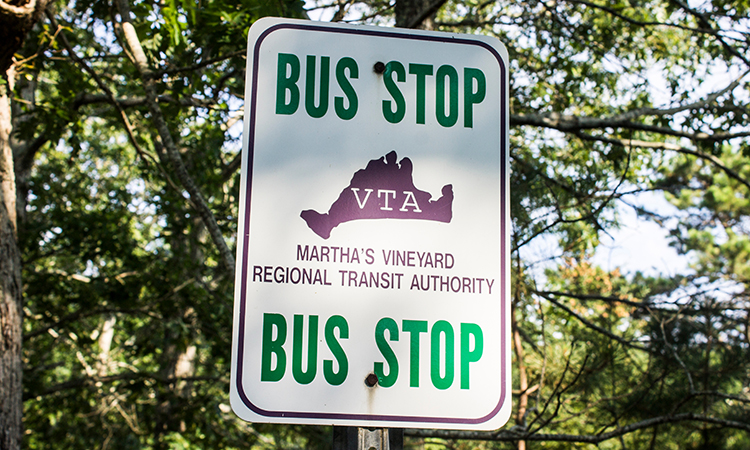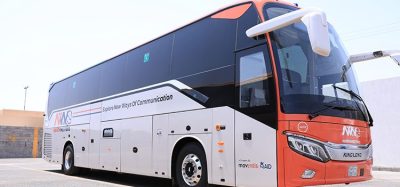Martha’s Vineyard develops solar charging infrastructure for bus fleet
- Like
- Digg
- Del
- Tumblr
- VKontakte
- Buffer
- Love This
- Odnoklassniki
- Meneame
- Blogger
- Amazon
- Yahoo Mail
- Gmail
- AOL
- Newsvine
- HackerNews
- Evernote
- MySpace
- Mail.ru
- Viadeo
- Line
- Comments
- Yummly
- SMS
- Viber
- Telegram
- Subscribe
- Skype
- Facebook Messenger
- Kakao
- LiveJournal
- Yammer
- Edgar
- Fintel
- Mix
- Instapaper
- Copy Link
Posted: 20 May 2021 | Intelligent Transport | No comments yet
The island of Martha’s Vineyard is launching its very own electricity grid, which will use solar power to charge the island’s electric bus fleet.


The Massachusetts island has a growing electric bus fleet
Martha’s Vineyard Transit Authority (VTA) in celebrating the launch of the VTA’s microgrid, which uses on-site solar power and battery energy storage to provide sustainable energy for its growing fleet of electric buses.
The combined system supports a more reliable and sustainable public transportation network for Martha’s Vineyard Island, off the coast of Massachusetts. The microgrid establishes a resilient independent energy source while significantly reducing carbon emissions – according to the VTA, the all-electric bus fleet will eliminate 36,000 tons of carbon dioxide over ten years of driving 1.4 million miles annually.
The single-user microgrid designed by Arup, PXiSE and Vermont Energy Investment Corporation is an energy distribution, storage, and generation network that can be disconnected from the main grid during power outages to then tap into its own stored electricity and solar-generated power. This system also allows the agency to reduce its demand on the grid during peak hours and enables it to charge vehicles overnight through its energy storage infrastructure without interrupting service.
Located at VTA’s existing depot in the town of Edgartown, the microgrid combines a new 700 kW DC solar PV array, battery energy storage and a diesel generator as back-up, as well as 16 vehicle charging stations, with 20 more to be added in the coming years. The fleet is charged largely through solar energy.
Martha’s Vineyard, an island of about 100 square miles off the coast of Massachusetts, is accessible by boat and air only. The island depends on imported fossil fuels for electricity and to power vehicles. This not only translates into higher fuel and energy costs, but it also contributes to greenhouse gas emissions and leaves the island vulnerable to power outages during a major weather event. Seeing the promise of electrifying its bus fleet, in 2018 the VTA began to transition from diesel to battery electric vehicles to better serve its 17,000 year-round residents who live in six towns connected by the bus service.
“Now more than at any time in the past, our focus is on the future, and that future is electric” said Angie Gompert, the VTA’s Administrator. “Our overriding priority is to provide a fleet that will serve the Island for years to come with buses that are the most reliable, emission-free, fuel-saving vehicles available.
“In order to do this our infrastructure needs to support and reflect this commitment. A state-of-the-art transportation system is what our Island community deserves and what the Martha’s Vineyard Transit Authority consistently strives to deliver.”
The network will also include induction charging stations that recharge the buses on route, allowing them to stay in service for their 200 to 300 miles-a-day circuit without detouring to recharge. Planned for operation in the Autumn of 2021, the stations consist of wireless charging plates embedded in the ground at bus stops. The vehicles will drive over the charging stations as passengers board and exit the vehicle, enabling buses to be partially charged numerous times throughout the day at each stop.
As an electrified fleet combined with a microgrid, the VTA says its new transit system presents a replicable framework for public transportation agencies nationwide, as they look to transition to a cleaner, more resilient and economic future.
Related topics
Alternative Power, Fleet Management & Maintenance, Infrastructure & Urban Planning, Public Transport, Sustainable Urban Transport
Related modes
Bus & Coach
Related cities
Martha's Vineyard, USA
Related organisations
Arup, Martha's Vineyard Transit Authority (VTA), PXiSE, Vermont Energy Investment Corporation
Related people
Angie Gompert








